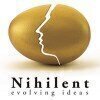Filter interviews by
AllGoVision Technologies Software Engineer Interview Questions, Process, and Tips
AllGoVision Technologies Software Engineer Interview Experiences
4 interviews found
I applied via Recruitment Consulltant and was interviewed before Aug 2022. There were 4 interview rounds.

(3 Questions)
- Q1. Define Dynamic memory allocation and the syntax in C. Explain the Memory map in C. Usage of Structures and Unions.
- Ans.
Dynamic memory allocation in C allows for allocating memory at runtime. Memory map in C shows how memory is organized. Structures and unions are used to group related data.
Dynamic memory allocation in C is done using functions like malloc(), calloc(), realloc().
Memory map in C shows the layout of memory segments like stack, heap, data, and code.
Structures in C allow grouping related data under a single name. Example: s...
- Q2. Define Linked list, add, delete and traverse a Linked list. Difference between Singly and Doubly LL.
- Ans.
A linked list is a data structure where each element points to the next element in the sequence. Adding, deleting, and traversing a linked list involves manipulating these pointers.
Linked list: a data structure where each element (node) has a reference to the next element
Add to linked list: create a new node and update the pointer of the last node to point to the new node
Delete from linked list: update the pointer of t...
- Q3. Define the classification performance metrics. ROC-AUC curve. What is the Precision-Recall tradeoff, when will there be no tradeoff.
- Ans.
Classification performance metrics evaluate the performance of a machine learning model in predicting categorical outcomes.
ROC-AUC curve measures the tradeoff between true positive rate and false positive rate at various thresholds.
Precision-Recall tradeoff involves balancing the precision and recall of a model. Higher precision typically means lower recall and vice versa.
There will be no tradeoff in Precision-Recall w...
(3 Questions)
- Q1. Define and write a program for Heap using List. (Python)
- Ans.
A Heap is a binary tree data structure where the key at each node is greater than or equal to the keys at its children.
Create a class for Heap with methods like insert, delete, and heapify.
Use a list to store the elements of the heap.
Implement the heapify function to maintain the heap property after insertions and deletions.
- Q2. Implement stack as a list (Python).
- Ans.
Implement stack using list in Python
Create a list to store the elements of the stack
Use append() to push elements onto the stack
Use pop() to remove elements from the stack
- Q3. Finding an element in an array. (Python)
- Ans.
Use Python's built-in 'in' keyword to find an element in an array of strings.
Iterate through the array and check if the element is present using 'in' keyword.
Return True if element is found, False otherwise.
Example: array = ['apple', 'banana', 'cherry'], element = 'banana', return True.
(2 Questions)
- Q1. General discussion about the company and their projects. CTC was not discussed, it was sent over the email.
- Q2. Are you willing to work overtime?
Interview Preparation Tips
- Data Structures
- Python
- Machine Learning
-The company uses Python, so learn OOPS and basic Data structures.
Skills evaluated in this interview
(1 Question)
- Q1. Easy coding challenge
(2 Questions)
- Q1. Moderate coding challenge
- Q2. System Design Question
(1 Question)
- Q1. Standard HR round
2 Coding questions on Google Form
(2 Questions)
- Q1. Questions on C/C++ & DS
- Q2. Singly Linked List
- Ans.
A singly linked list is a data structure where each element points to the next element in the list.
Each element in a singly linked list contains a value and a pointer to the next element.
Traversal in a singly linked list is done sequentially from the head to the tail.
Insertion and deletion operations are efficient in a singly linked list compared to an array.
Interview Preparation Tips
Skills evaluated in this interview

(2 Questions)
- Q1. Why we should not assign uniform weights in neural network
- Ans.
Uniform weights in neural network can lead to overfitting and slow learning.
Uniform weights can cause all neurons to behave similarly, leading to redundancy and lack of diversity.
It can also cause overfitting, where the network becomes too specialized to the training data and performs poorly on new data.
Non-uniform weights allow the network to learn more efficiently and effectively by assigning different importance to ...
- Q2. Difference between overfitting and underfitting
- Ans.
Overfitting is when a model is too complex and fits the training data too well, while underfitting is when a model is too simple and cannot capture the underlying patterns in the data.
Overfitting occurs when a model is trained too well on the training data and cannot generalize well to new data
Underfitting occurs when a model is too simple and cannot capture the underlying patterns in the data
Overfitting can be detecte...
(1 Question)
- Q1. Normal discussion about salary
Interview Preparation Tips
Skills evaluated in this interview
AllGoVision Technologies interview questions for designations
Top trending discussions






Interview questions from similar companies

I was interviewed in Jan 2025.
(15 Questions)
- Q1. Explain the difference between ArrayList and LinkedList in Java. ArrayList is implemented as a dynamic array, while LinkedList is a doubly linked list. ArrayList provides fast random access (O(1) complexit...
- Ans.
ArrayList is preferred for frequent retrieval operations due to fast random access, while LinkedList is suitable for frequent insertions/deletions.
Use ArrayList when frequent retrieval operations are required, such as searching for elements in a large collection.
Choose LinkedList when frequent insertions/deletions are needed, like maintaining a queue or stack.
Consider memory overhead and performance trade-offs when dec...
- Q2. What are the advantages and disadvantages of using Java’s synchronized keyword for thread synchronization? The synchronized keyword ensures that only one thread can access a block of code at a time. It pre...
- Ans.
ReentrantLock should be used instead of synchronized when more flexibility and control over locking mechanisms is needed.
Use ReentrantLock when you need to implement custom locking strategies or require advanced features like tryLock() and lockInterruptibly().
ReentrantLock supports fair locking mechanisms, ensuring that threads acquire the lock in the order they requested it.
Explicit unlocking in ReentrantLock reduces ...
- Q3. What is the difference between == and .equals() in Java? == checks for reference equality, meaning it compares memory addresses. equals() checks for value equality, which can be overridden in user-defined ...
- Ans.
In Java, == checks for reference equality while equals() checks for value equality. Misuse of == can lead to logical errors.
Override equals() when you want to compare the values of objects instead of their references
Override hashCode() alongside equals() to ensure proper functioning in collections like HashMap
Consider implementing Comparable interface for natural ordering in collections
- Q4. How does the Java garbage collector work? Garbage collection in Java automatically reclaims memory occupied by unused objects. The JVM has different types of GC algorithms, including Serial, Parallel, CMS,...
- Ans.
Garbage collection in Java automatically reclaims memory occupied by unused objects using different algorithms and memory regions.
Java garbage collector automatically reclaims memory from unused objects
Different types of GC algorithms in JVM: Serial, Parallel, CMS, G1 GC
Objects managed in Young Generation, Old Generation, and PermGen/Metaspace
Minor GC cleans up short-lived objects in Young Generation
Major GC (Full GC) ...
- Q5. What are the main features of Java 8? Java 8 introduced lambda expressions, enabling functional-style programming. The Stream API allows efficient data processing with map, filter, and reduce operations. D...
- Ans.
Lambda expressions in Java 8 improve readability and maintainability by enabling concise and functional-style programming.
Lambda expressions allow writing more compact code by reducing boilerplate code.
They enable passing behavior as arguments to methods, making code more modular and flexible.
Example: (a, b) -> a + b is a lambda expression that adds two numbers.
- Q6. Describe the differences between checked and unchecked exceptions in Java. Checked exceptions must be handled using try-catch or declared with throws. Unchecked exceptions (RuntimeException and its subclas...
- Ans.
Checked exceptions must be handled explicitly, while unchecked exceptions do not require explicit handling.
Use custom exceptions when you want to create your own exception types to handle specific scenarios.
Custom exceptions can be either checked or unchecked, depending on whether you want to enforce handling or not.
For example, a custom InvalidInputException could be a checked exception if you want to ensure it is cau...
- Q7. What is the Java Memory Model, and how does it affect multithreading and synchronization? The Java Memory Model (JMM) defines how threads interact with shared memory. It ensures visibility and ordering of ...
- Ans.
The Java Memory Model defines how threads interact with shared memory, ensuring visibility and ordering of variable updates in a concurrent environment.
Volatile keyword ensures changes to a variable are always visible to all threads.
Synchronized keyword provides mutual exclusion and visibility guarantees.
Reordering optimizations by the compiler or CPU can lead to unexpected behavior.
Happens-before relationship determin...
- Q8. Can you explain the difference between method overloading and method overriding in Java? Method overloading allows multiple methods with the same name but different parameters. It occurs within the same cl...
- Ans.
Method overloading allows multiple methods with the same name but different parameters, while method overriding allows a subclass to provide a different implementation of a parent method.
Use method overloading when you want to provide multiple ways to call a method with different parameters.
Use method overriding when you want to provide a specific implementation of a method in a subclass.
Example of method overloading: ...
- Q9. What are functional interfaces in Java, and how do they work with lambda expressions? A functional interface is an interface with exactly one abstract method. Examples include Runnable, Callable, Predicate...
- Ans.
Functional interfaces in Java have exactly one abstract method and work with lambda expressions for concise implementation.
Functional interfaces have exactly one abstract method, such as Runnable, Callable, Predicate, and Function.
Lambda expressions provide a concise way to implement functional interfaces.
Default methods in interfaces help in evolving APIs without breaking backward compatibility.
Method references (::) ...
- Q10. What is a Java Stream, and how does it differ from an Iterator? Streams enable functional-style operations on collections with lazy evaluation. Unlike Iterators, Streams support declarative operations lik...
- Ans.
Java Streams enable functional-style operations on collections with lazy evaluation, unlike Iterators.
Parallel streams can improve performance by utilizing multiple threads, but may introduce overhead due to thread management.
Care must be taken to ensure thread safety when using parallel streams in a multi-threaded environment.
Parallel streams are suitable for operations that can be easily parallelized, such as map and...
- Q11. Explain the concept of immutability in Java and its advantages. An immutable object cannot be changed after it is created. The String class is immutable, meaning modifications create new objects. Immutabl...
- Ans.
Immutability in Java prevents objects from being changed after creation, promoting thread safety and preventing unintended side effects.
Immutable objects cannot be modified after creation, promoting thread safety
String class in Java is immutable, modifications create new objects
Use final fields and avoid setters to create immutable classes
Collections can be made immutable using Collections.unmodifiableList()
Immutabilit...
- Q12. What is the difference between final, finally, and finalize in Java? final is a keyword used to declare constants, prevent method overriding, or inheritance. finally is a block that executes after a try-c...
- Ans.
final, finally, and finalize have different meanings in Java. final is for constants, finally for cleanup, and finalize for garbage collection.
final is used for constants, preventing method overriding, and inheritance
finally is used for cleanup actions after a try-catch block
finalize() is called by the garbage collector before object deletion
Alternatives to finalize() for resource management include using try-with-reso...
- Q13. Explain the Singleton design pattern in Java. Singleton ensures that only one instance of a class exists in the JVM. It is useful for managing shared resources like database connections. A simple implemen...
- Ans.
Singleton design pattern ensures only one instance of a class exists in the JVM, useful for managing shared resources like database connections.
Avoid using Singleton when multiple instances of a class are required.
Avoid Singleton for classes that are not thread-safe.
Avoid Singleton for classes that need to be easily mockable for testing purposes.
- Q14. What are Java annotations, and how are they used in frameworks like Spring? Annotations provide metadata to classes, methods, and fields. @Override, @Deprecated, and @SuppressWarnings are common built-in ...
- Ans.
Java annotations provide metadata to classes, methods, and fields, improving code readability and maintainability.
Annotations like @Component, @Service, and @Autowired in Spring help with dependency injection
Annotations reduce boilerplate code compared to XML configurations
Custom annotations can be created using @interface
Reflection APIs allow reading annotation metadata dynamically
Annotations like @Transactional simpl
- Q15. How do Java Streams handle parallel processing, and what are its pitfalls? Parallel streams divide data into multiple threads for faster processing. The ForkJoin framework handles parallel execution inter...
- Ans.
Java Streams handle parallel processing by dividing data into multiple threads using the ForkJoin framework. Pitfalls include race conditions, performance issues with small datasets, and debugging challenges.
Parallel streams divide data into multiple threads for faster processing
ForkJoin framework handles parallel execution internally
Useful for CPU-intensive tasks but may not improve performance for small datasets
Share...

I was interviewed in Jan 2025.
(20 Questions)
- Q1. Explain the difference between ArrayList and LinkedList in Java. When would you choose one over the other?
- Q2. What are the advantages and disadvantages of using Java’s synchronized keyword for thread synchronization? Can you explain how the ReentrantLock compares to synchronized?
- Q3. What is the difference between == and .equals() in Java? When should each be used, and what issues can arise from improper usage?
- Q4. How does the Java garbage collector work? Can you describe the different types of garbage collection algorithms available in Java?
- Q5. What are the main features of Java 8? Can you explain how lambdas and the Stream API have changed the way Java applications are written?
- Q6. Describe the differences between checked and unchecked exceptions in Java. Provide examples and explain how to handle them properly.
- Q7. What is the Java Memory Model, and how does it affect multithreading and synchronization? How does volatile help ensure memory visibility?
- Q8. Can you explain the difference between method overloading and method overriding in Java? Provide examples where each should be used.
- Q9. What are functional interfaces in Java? How do they work with lambda expressions? Provide an example of a custom functional interface.
- Q10. What is a Java Stream, and how does it differ from an Iterator? Explain how Streams can be used to process collections efficiently.
- Q11. Explain the concept of immutability in Java. How does the String class achieve immutability, and what are the advantages of immutable objects?
- Q12. What is the difference between final, finally, and finalize in Java? Provide examples to illustrate their usage.
- Q13. Explain the Singleton design pattern in Java. How can you implement it safely to ensure thread safety?
- Q14. What are Java annotations, and how are they used in frameworks like Spring? Explain the difference between built-in and custom annotations.
- Q15. How do Java Streams handle parallel processing? What are the potential pitfalls of using parallel streams, and how can they be mitigated?
- Q16. Explain the difference between ArrayList and LinkedList in Java. ArrayList is implemented as a dynamic array, while LinkedList is a doubly linked list. ArrayList provides fast random access (O(1) complexi...
- Q17. What are the advantages and disadvantages of using Java’s synchronized keyword for thread synchronization? The synchronized keyword ensures that only one thread can access a block of code at a time. It pr...
- Q18. What is the difference between == and .equals() in Java? == checks for reference equality, meaning it compares memory addresses. equals() checks for value equality, which can be overridden in user-defined...
- Q19. How does the Java garbage collector work? Garbage collection in Java automatically reclaims memory occupied by unused objects. The JVM has different types of GC algorithms, including Serial, Parallel, CMS...
- Q20. What are the main features of Java 8? Java 8 introduced lambda expressions, enabling functional-style programming. The Stream API allows efficient data processing with map, filter, and reduce operations. ...

I applied via Company Website and was interviewed in Nov 2024. There were 3 interview rounds.
Standard quantitative questions accompanied by logical reasoning and related topics.
(4 Questions)
- Q1. Asked about my projects.
- Q2. What are the basic Object-Oriented Programming (OOP) concepts, including polymorphism and inheritance?
- Ans.
OOP concepts include encapsulation, inheritance, polymorphism, and abstraction.
Encapsulation: Bundling data and methods that operate on the data into a single unit (class).
Inheritance: Allows a class to inherit properties and behavior from another class.
Polymorphism: Objects of different classes can be treated as objects of a common superclass.
Abstraction: Hides complex implementation details and only shows the necessa
- Q3. Can you explain React, how it functions, and the related concepts?
- Ans.
React is a JavaScript library for building user interfaces.
React allows developers to create reusable UI components.
It uses a virtual DOM for efficient rendering.
React uses a declarative approach to define how the UI should look based on the application state.
It supports server-side rendering for improved performance.
React can be used with other libraries like Redux for state management.
- Q4. About my final year project and how would you improve it?
(2 Questions)
- Q1. Can you introduce yourself and provide some information about your family?
- Ans.
I am a software engineer with a passion for coding and problem-solving. I come from a close-knit family with supportive parents and siblings.
Software engineer with coding and problem-solving skills
Close-knit family with supportive parents and siblings
- Q2. What are your strengths and weaknesses, and how are you addressing your weaknesses?
- Ans.
My strengths include problem-solving and teamwork, while my weaknesses are time management and public speaking. I am addressing my weaknesses by taking time management courses and practicing public speaking.
Strengths: problem-solving, teamwork
Weaknesses: time management, public speaking
Addressing weaknesses: taking time management courses, practicing public speaking
Interview Preparation Tips

(2 Questions)
- Q1. Technical questions regarding Salesforce
- Q2. Technical questions regarding Salesforce
(2 Questions)
- Q1. Salary discussion
- Q2. Salary discussion
Interview Preparation Tips

I applied via campus placement at SRM Institute of Science and Technology, NCR Campus, Ghaziabad and was interviewed in Nov 2024. There was 1 interview round.
(4 Questions)
- Q1. Can you tell me about yourself?
- Ans.
I am a passionate software engineer with 5 years of experience in developing web applications using various technologies.
5 years of experience in software development
Proficient in developing web applications
Skilled in using various technologies
Passionate about software engineering
- Q2. Can you explain one of the projects you completed during the academic year?
- Ans.
Developed a web-based student management system for tracking attendance and grades.
Used HTML, CSS, and JavaScript for front-end development.
Implemented backend functionality using PHP and MySQL database.
Incorporated user authentication and authorization features for secure access.
Tested the system thoroughly to ensure functionality and user-friendliness.
- Q3. What were some of the fundamental concepts of Artificial Intelligence that the interviewer inquired about during your interview as a Computer Science and Engineering - Artificial Intelligence and Machine L...
- Q4. What were your Achievements in the graduation years
- Ans.
Graduated with honors, completed multiple internships, and won coding competitions
Graduated with honors in Computer Science
Completed internships at XYZ Company and ABC Corporation
Won first place in coding competition at university hackathon
Interview Preparation Tips

It was good . 3 question
It was hard, 5 questions
(4 Questions)
- Q1. Face to Face interview .
- Q2. Java basic question
- Q3. Java question directly start with hard coding question
- Q4. Not asking self introduction or anything related past company
(1 Question)
- Q1. NA i am not selected
AllGoVision Technologies Interview FAQs
Some of the top questions asked at the AllGoVision Technologies Software Engineer interview -
Tell us how to improve this page.
AllGoVision Technologies Interviews By Designations
Interview Questions for Popular Designations
- Senior Software Engineer Interview Questions
- Associate Software Engineer Interview Questions
- Softwaretest Engineer Interview Questions
- Software Engineer Trainee Interview Questions
- Software Developer Intern Interview Questions
- Software Developer Interview Questions
- Software Development Engineer Interview Questions
- Junior Software Developer Interview Questions
- Show more
AllGoVision Technologies Software Engineer Interview Process
based on 4 interviews
1 Interview rounds
- Technical Round
Software Engineer Interview Questions from Similar Companies
AllGoVision Technologies Software Engineer Reviews and Ratings
based on 3 reviews
Rating in categories
|
Software Engineer
32
salaries
| ₹5 L/yr - ₹8 L/yr |
|
Test Engineer
10
salaries
| ₹2.8 L/yr - ₹4.8 L/yr |
|
Software Developer
7
salaries
| ₹5.4 L/yr - ₹8 L/yr |
|
Technical Support Engineer
7
salaries
| ₹2.8 L/yr - ₹7.9 L/yr |
|
Senior Software Engineer
6
salaries
| ₹8.5 L/yr - ₹10 L/yr |

Vehant Technologies

Cyclops MedTech

Datamatics Global Services

Nihilent
- Home >
- Interviews >
- AllGoVision Technologies Interview Questions >
- AllGoVision Technologies Software Engineer Interview Questions











